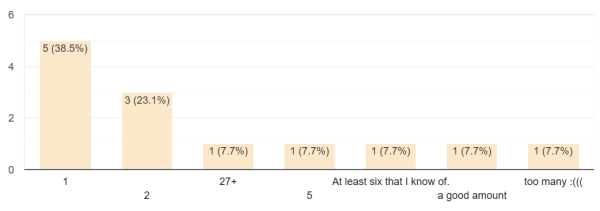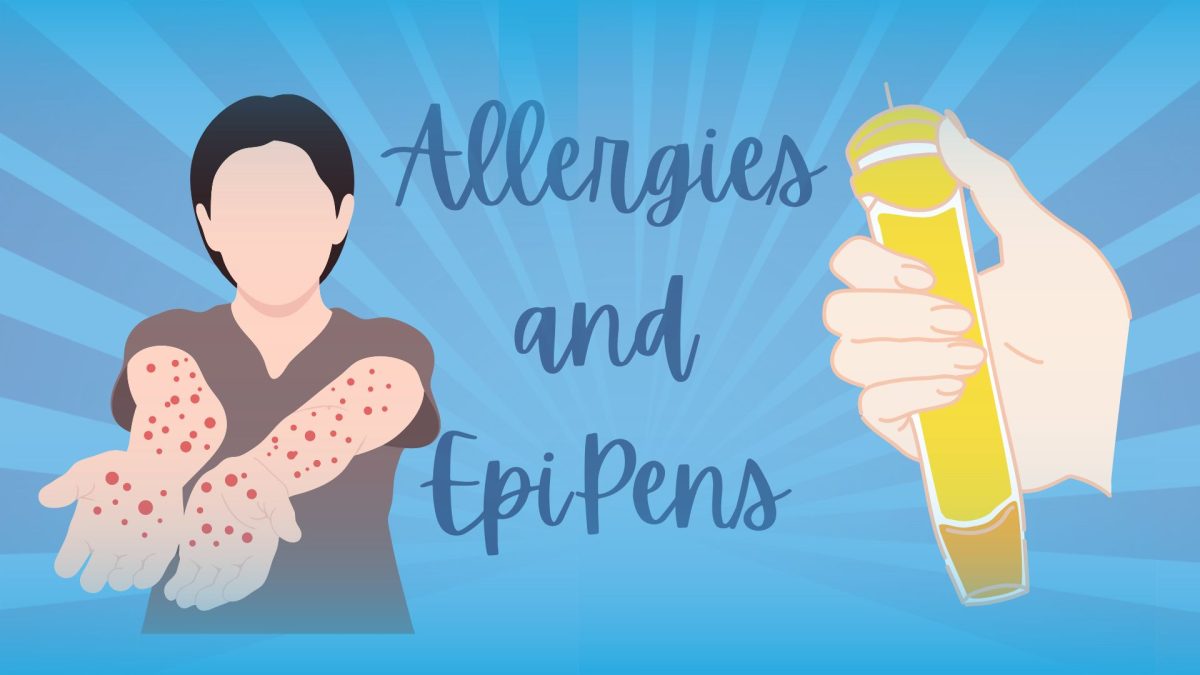33 million Americans have allergies to different foods. Of these 33 million, six million are allergic to peanuts and almost four million are allergic to tree nuts, according to Facts and Statistics – FoodAllergy. However there can be more than what meets the eye. Some can be dangerous depending on the person and severity of the reaction they have to the food, which is exactly why schools and individuals should be careful around possible allergens.
“One time I was actually at school, and my friend gave me a snack and it had almond flour. I ate it, and I took a Benadryl and the Benadryl didn’t work, so I had to go to the hospital,” Senior Isabel Mayo said. “So now I have an EpiPen.”

One example of a classroom that is cautious around allergens is U.S. history teacher Kelsey Bates, who said she wants a “safer” environment for students that deal with allergies. Bates keeps a “No peanuts allowed” right by her classroom door—not just as a reminder, but as a welcome sign.
“I think it makes it more welcoming and inclusive for [students], so that they’re not nervous,” Bates said.
Some allergies could be more severe than others. The most common type is anaphylactic. Other rare types of allergies are cytotoxic, immune-complex and cell-mediated.
“My allergic reactions used to not be as severe but I am anaphylactic, meaning my throat does close up if I eat any of the things that I named,” Mayo said.
Allergies differ from person to person, but even if someone is less allergic to an allergen, it does not mean that an allergic reaction can’t take place. It’s always better to be safe than sorry. There are also some surprising allergic reactions that happen in school, some that might not have been preventable but could be in the future. Schools are not going to be 100% free of allergens, but there are precautions that can be taken to lessen risks.
“In bio freshman year, when we did the rat dissections, the rats were stored in formaldehyde and after handling them in class,” junior Kaylinn Fleck said. “I felt short of breath and itchy on my hands and arms until I got home and could use Benadryl and sleep it off.”
People can also have more than one allergy, some have more than 20. This gives the need for more safety in the classroom regarding what students can snack on or bring with them from home. It creates a better connection in the classroom and less worry for allergic reactions. Some can give students ”really itchy eyes,” senior Tessa Bersin said. This can deter from needed learning time.

“I have primarily nut allergies, and they are mostly tree nuts with cashews and pistachios on the side,” senior Tisha Ghazi said. “So it’s like Brazil nuts, macadamia nuts, walnuts, and those other two that I mentioned.”
Food allergies are becoming more and more common amongst children, and an estimated 13 percent of students in the U.S. have one or more allergies, according to Food Allergy Frequently Asked Questions – School Nutrition Association.
“I have a lot,” freshman Ayra Anwar said. “I’m just going to name the really bad ones, so like wheat, codfish, soybean, all nuts, sesame, pineapples, barley, ginger, or not ginger, but just all the nuts.”
Especially since there is a rise of student allergies, even to something as common as food, teachers must know how to use an EpiPen. Even though highschoolers may already know how to administer one on themselves, it’s important for everyone to be prepared in case of emergency.
“I think it’s a pretty easy thing,” Anwar said. “because there’s the practice ones, and also the instructions are on EpiPens as well, and it’s just pretty simple to just take off the top and put it into someone.”
So, what happens if you don’t know what to do when someone has an allergic reaction? Don’t panic. There are many things you can do to help during these moments. There are also many educated adults all around the building, like teachers, nurses, counselors and principals.
“In an emergency, check to see if the student has an EpiPen with them,” campus nurse Laura Arena said. “If they do, they should administer that or seek assistance from the teacher. Assess for any signs of shock and notify 911 if an EpiPen has to be used. Even hours later they could have another reaction still related to the initial incident.”
The best thing to understand about allergies in the classroom, is that it’s real. It isn’t something to pass by just because it isn’t as severe, it’s still important to keep a welcoming atmosphere in the classroom.
“Awareness is huge,” campus nurse Claudia Fahmy said. “Don’t share food, check labels, clean up after eating and communicate with the nurse’s office.”








